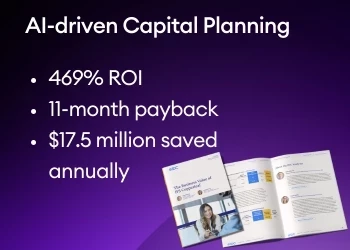The best way to predict the future is to create it
In his monthly column, William Cohen explains why determining the futurity of present decisions is an essential ingredient to strategic planning success
Add bookmark
“In preparing for battle I have always found that plans are useless, but planning is indispensable”. - Dwight D. Eisenhower
Creating an organization’s future is an awesome responsibility. In fact, management theorist, Peter Drucker, argued that leaders should consider themselves custodians of the future and spend just as much time thinking about the future as they think about the present.
All too often, organizations get caught up in the moment and fail to look ahead. The future is ignored because people naturally assume that life, like a fairy tale, will be “happily ever after”. In reality, erroneous planning and decisions made in the present combined with unfavorable economic, political, technological and market conditions can have devastating business consequences.
After examining successful and failed organizations, Drucker realized that the seeds for what we see today are sown long before and future success is entirely dependent on what happens today. Put another way, the future is now.
To help organizations more effectively address immediate problems and create a launchpad for the future, Drucker developed a new strategic planning methodology that emphasizes a structured and continuous approach.
Drucker’s definition of strategic planning
Drucker’s definition of strategic planning was “the continuous process of making present entrepreneurial and therefore risk-taking decisions systematically and with the full knowledge of their futurity; and then systematically organizing the efforts needed to carry out these decisions through organized systematic feedback”.
The fundamental elements of strategic planning are:
- It is a continuous process
- It involves entrepreneurial (risk-taking) decisions in the present
- These decisions must be made systematically and with the greatest knowledge available in regards to their futurity
- Leaders are responsible for organizing the efforts needed to carry out these decisions
- Leaders must be totally involved in the development, establishment and execution of these actions
Implicit to this definition is the recognition that a leader is responsible for everything that happens or fails to happen in the organization he or she leads. Therefore, strategic planning is the responsibility of the leader and cannot be delegated to a separate strategic planning group.
Full time strategic planners can develop plans and make recommendations to leaders, but it is the leader’s responsibility to give direction, oversee the planning process, establish strategies, direct their implementation, obtain and analyze feedback, and continually adjust the actions and movement toward the end goal.
This process does not substitute facts for judgment or, as Drucker put it, “substitute science for management”. What systematic strategic planning does is strengthen any manager’s judgment, leadership and vision. Accordingly, the leader must be involved as closely as possible in this process on a continual basis.
It is a mistake for a leader to establish a separate group for this planning and then just sign off on the results. In fact, there are strong benefits to be gained by the leader’s close involvement that are unattainable through any other means.
Defining and evolving strategic plans
The plan is a combination of objectives, available resources and potential strategies. More than that, it is a how-to guide for taking the organization towards its ideal future state. Once the basics are known, the plan can be documented and adjusted as needed.
The essential elements of strategic planning success
Once objectives are are known and the situation is repeatedly analyzed, various strategies can be compared. But the situation as it is likely to exist must be determined first.
Repeated analysis of the situation produces a vast amount of information and herein lies a problem. Our environment today is only the starting point as conditions will certainly change. Drucker saw that many planners simply extrapolated the present into the future, assuming that everything would remain the same or that current trends would continue. Unfortunately, this rarely happens.
Unexpected events such as wars, recessions, technological developments, and the sudden collapse or founding of new corporations can swiftly derail even the best laid plans.
Forecasting only once for a future environment ten years in the future can be a grave error. Even tommorow’s weather, with all our technology and scientific analyses and modeling, is difficult and far from 100% accurate.
Drucker’s solution to this problem has two parts known as “sloughing off yesterday” and “what new and different things we have to adjust for and when.”
You cannot predict the future, but you can create it
Drucker recognized the problems in trying to predict the future. His solution was to begin with the objectives of the business.
The first question he asked was, “What resources do we have now and how must we use them to attain our objectives?”.
Drucker noted that most plans focus on the past and almost never talk about dropping current products or projects even if they are failing. This by the way, was one his criticisms of government’s attempt to meet social responsibilities. New projects were continually introduced while older, marginally successful projects puttered on.
With this in mind, Drucker suggested that leaders look at the situation and ask, “If we were not already committed to this, would we still be doing it?”. If the answer is no, the project should be abondoned and its resources reallacted to more worthy initiatives. This thought processes is known as Drucker’s abandonment theory.
The third and fourth questions leaders should ask themselves is, “What has already happened that will create the future?” and “what actions can we take today to improve future outcomes?”.
Use baseline assumptions to understand how past actions impact future outcomes
With baseline assumptions, the idea is not to forecast but to make baseling assumptions based on the best information available. As you proceed to implement your strategic plan and measure your progress, you will also update your baseline assumptions to be more conducive to reaching your intended goals.
Great leaders embrace risk and futurity of present decisions
First, one’s view of the future must be representative of what he called “the entrepreneurial view”. By this he meant a willingness to accept risk and think in terms of contribution, customer satisfaction and benefit to the market and the economy. He believed that leaders must have the courage to make the future happen and that this courage must not be wasted.
The decisions taken must meet the test of practicality. In other words, these decisions must be actionable and produce real economic results. Finally, Drucker stated that leaders must be personally committed to what they envisioned and willing to take measured risks to achieve their goals.
























